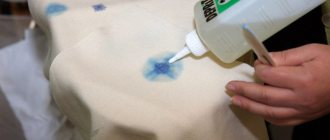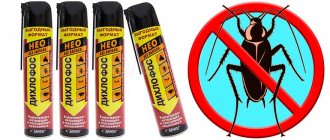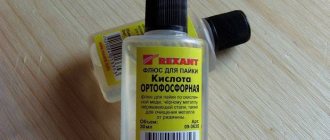- March 27, 2019
- Family
- Elena Erokhina
For lovers of everything natural, as well as opponents of expensive domestic and foreign household chemicals, we invite you to take a closer look at glycerin. Its capabilities when used in everyday life will not leave you indifferent. The product has been known for more than two hundred years and is widely used in science, cosmetology, medicine, food production, agriculture, metallurgy and other industries. Let's learn about the properties and possible uses of glycerin at home.
For medical purposes
The product has become widespread due to its physical and chemical properties. It may increase the viscosity of the drug or dissolve it. Glycerin is used to soften the skin, so in the pharmaceutical industry it is added not only to medicines, but also to medicinal creams, ointments, and pastes. As a component, it does not allow drugs to dry out, and also has antiseptic properties, which promotes disinfection.
It should be noted that glycerin is available in the form of an aqueous solution and in the form of suppositories. Everything is clear with suppositories. Almost every mother used them if she encountered constipation in her baby, since the drug is absolutely safe and gently solves a delicate problem. Let's figure out what liquid glycerin is used for. Most often, the solution is taken orally for intracranial pressure, acute hepatic encephalopathy, glaucoma in combination with other medications prescribed by a specialist. At home, the use of glycerin is possible in the treatment of throat diseases. It is recommended to use Lugol's solution with glycerin. To get rid of a cough, you need to prepare the remedy yourself. To do this you need: the juice of one lemon, two tablespoons of glycerin and a spoonful of honey. The mixture should be consumed one teaspoon up to 8 times a day.
Application area
Glycerin is a trihydric alcohol.
It is a colorless and viscous liquid with a sweetish taste.
It is used in the following industries:
- food industry;
- tobacco products;
- medicine;
- Agriculture;
- chemical industry;
- cosmetology;
- electrical engineering;
- radio engineering.
In cosmetology
Let's look at how to use glycerin at home to preserve youth and beauty. There are many recipes in which this component, if not the main one, is mandatory. So, for example, we can highlight the preparation:
- compositions for application in the form of masks;
- lotions;
- hand skin products.
general characteristics
Glycerin is an organic compound in the form of a colorless, odorless liquid, has a sweetish taste, and is harmless.
Glycerin is added to bakery products, confectionery products, pasta, and soft drinks. The beneficial properties of the component are known to everyone, however, people suffering from kidney and heart diseases are not recommended to abuse glycerin.
To increase antiseptic effects, trihydric alcohol is used to produce detergents and medications.
Face masks
Depending on your skin type and periodic problems, you need to learn how to make your own products with glycerin for the face. How to use such compositions correctly and what additional components should be purchased, we will learn further:
- A moisturizing mask is made by dissolving one tablespoon of glycerin in two tablespoons of water. Add one egg yolk to the resulting mixture and beat thoroughly. Apply the product to your face, leave for 15 minutes and rinse with warm water.
- Additional nutrition for dry skin can be provided by rubbing one egg yolk with one tablespoon of mashed potatoes prepared with milk. Next you need to add 1 teaspoon of honey and the same amount of vegetable oil to the mixture. Separately, you need to dissolve 5 ml of glycerin in 20 ml of water and add the resulting solution to the remaining components. Before use, the composition should be mixed thoroughly. You can leave the mask on your face for 15 minutes, then wash it off with warm water.
- A nourishing and moisturizing mask suitable for dry and normal skin. You need to take one teaspoon each of glycerin and honey, pour six of the same tablespoons of boiled water into them and stir. Next, you need to add 10-15 g of oatmeal or ground flakes into the mixture and try to achieve a uniform consistency of the composition. After five minutes, you can apply the mask to your face for 10-15 minutes. The product must be washed off with warm water.
- Since it is recommended to refresh the skin with a toning mask at least once a week, using glycerin, which is on hand, is always easier than contacting professional cosmetologists. You can dilute 5 ml of glycerin in two tablespoons of water and add a chopped lemon slice to the mixture. After stirring, add 15 ml of sour cream and the yolk of one egg. Having received a homogeneous composition, you need to keep it on your face for 15 minutes and then rinse with water.
- A clay mask, which you can simply pour into an aqueous solution of glycerin, will perfectly dry the skin. When making the product, you need to make sure that you get a mixture that resembles a face cream in thickness. Apply this mask for 10 minutes and wash it off with cool water.
The use of glycerin for leather clothing and furniture
Glycerin is often used not only to care for facial skin, but also to soften leather clothing.
Use of glycerin for leather clothing and furniture:
- It is necessary to warm the clean product to a temperature of 50 degrees, moisten a cotton pad with it, and wipe the leather products. Leave for 15 minutes. During this time, the product should be absorbed. If the surface of the clothing still remains dry, creases and folds are visible on it, and dryness is felt, the procedure can be carried out several times in a row until the surface is well moistened and soft.
- It is worth using glycerin to care for leather furniture. If paint has been removed from leather products using organic solvents, acetone or alcohol, and products that dry out the leather, it is recommended to use glycerin for final treatment. This will help soften the surface of the product, make it softer and prevent the appearance of cracks and creases.
Pharmaceutical drug
Lotions for use on facial skin
There are several other ways to use glycerin on your face. Experts call one of them the use of homemade lotions. Let's find out a couple of proven recipes:
- To wipe the skin of the face and neck, instead of washing with plain water, you can use a mint composition. Dry herb in a volume of 1/2 cup must be poured with boiling water to a full glass and left for 24 hours under a towel. After straining the product, add 20 ml of glycerin to it.
- Chamomile is used to wipe the skin in the morning and evening for cleansing purposes. It is necessary to pour three parts of infused chamomile flowers with one part of vodka. Add one teaspoon of glycerin to a glass of the resulting product.
- A cleansing and at the same time refreshing product prepared at home will take about an hour of your time, but will definitely give a positive result. You need to take two tablespoons of dried herbs that suit your skin type, add 200 ml of hot water, then boil for about half an hour. The product must be left to cool under the lid, then strain and add to it one teaspoon of glycerin and one tablespoon of cologne.
- In order to tone and moisturize the skin, you need to cut a lemon, pour 250 ml of cold water into it and leave in a dark place for five to seven days. After straining the infusion, you need to add 5 ml of glycerin to it.
For bouquets
There are not many ways to preserve a beautiful bouquet in its original form for a long time. One such method is to stabilize colors with glycerin.
This way you can preserve flowers for a period of 3 to 5 years, depending on the plant variety and the materials chosen.
All you need is a long-stemmed flower, glycerin and a little patience. Dry the flower for 18–20 hours, then place it in a vase with a glycerin solution. To do this, mix it with water in a ratio of 1 to 1. Trim the stem a little every day. After about 2 weeks, the water in the flower will be completely replaced by the solution.
Glycerin as a homemade antiseptic
Glycerin for hand skin
Representatives of the older generation often talk about how to use a product that has been proven over the years at home. During times of shortage, it was difficult to get good hand lotion, but glycerin was always available. The two recipes presented below will help you prevent skin problems, but only if they are used for at least two months:
- Mix one teaspoon each of glycerin and honey. Separately dissolve 2 g of borax in 70 ml of water. Combine the two resulting compositions, then pour 20 ml of vodka into them.
- Add 40 g of glycerin, 10 ml of ammonia and three drops of essential oil to your taste to a third glass of water.
Such products are considered very useful for hands. If you don’t have time to make your own formulations, then buy creams with glycerin. They will provide skin protection during the cold season, eliminate the feeling of dryness and relieve flaking. Manicurists also recommend keeping your hands in baths of warm water and this cheap product. It will help not only preserve your skin, but also improve the condition of your nails.
Is it possible to drink Glycerin internally Glycerin honey lemon for cough for children
Glycerin has the ability to draw liquid onto itself, as it is an alcohol. When it enters the body, glycerol tends to bind water molecules. If glycerin enters the body in large quantities, dehydration may occur.
Glycerin is able to fight pathogenic bacterial agents. If it enters the digestive tract, the reproduction and vital activity of bacteria may decrease. When applied to the skin, the substance reduces the proliferation of pathogenic microorganisms.
Glycerol may be found in foods. The dose in them is not large, so with moderate consumption of products containing glycerin, no complications are observed.
Cosmetics containing glycerol are not dangerous when used in moderation.
What do you need to know before using the product?
In the instructions for medical glycerin, you should pay attention to the following points:
- As a laxative, it should be used only when absolutely necessary. As soon as the condition returns to normal, its use should be discontinued;
- In case of contact with mucous areas, it is enough to rinse them with running water;
- It is forbidden to use the product yourself, as an overdose can lead to harmful consequences.
Watch a video about using glycerin for beauty.
Glycerin can be freely purchased at a pharmacy; you do not need to take a special prescription from a doctor. This product should be stored in a dark place, the air temperature should not exceed 25 degrees. If you follow all storage recommendations, its shelf life will reach five years. And the candles will not deteriorate within two years.
Application in cosmetology
In cosmetology, this product, together with vitamin E, is often used to soften the skin. Instructions for the use of glycerin ointment and vitamin E consist of the following recommendations:
- You need to take even proportions of the components;
- Mix the ingredients thoroughly;
- For greater effectiveness, use the ointment before going to bed. Already in the morning the effect will surprise you: your skin will become smoother and more even.
Vitamin E is able to slow down oxidative processes in cells and also increases skin regeneration. And glycerin perfectly retains moisture and eliminates inflammation. These two substances, when combined, can relieve skin irritations that arise from environmental exposure.
Glycerin during pregnancy
Very often, pregnant women who are faced with the problem of constipation are prescribed suppositories with glycerin. This substance is non-toxic, so it does not harm the health of the mother and child. They are prescribed if constipation is caused by the following reasons:
- Changes in normal intestinal motility (this problem arises as a result of hormonal changes in the mother’s body);
- In case of hemorrhoids;
- If a woman’s doctors have detected segmental spasms of the large intestine.
Doctors prescribe this remedy to girls who are in the early stages of pregnancy. While most medications are prohibited during this period.
Beautiful hair is easy
To have chic and shiny curls, hairdressing professionals also recommend using glycerin. Beauty salon experts tell you how to use this product for your hair.
Firstly, it should be noted that glycerin does not allow both the hair scales and the scalp to dry out. Secondly, it cleans the surface of dirt and cosmetic compounds. Thirdly, the product helps the strands become obedient. The constant use of glycerin makes it easier to comb, thickens curls, gives elasticity and shine, removes dandruff and static effect. However, girls with dark hair should keep in mind that formulations with glycerin may slightly lighten the curls.
There are a number of hair masks that improve their condition:
- To moisturize, you need to take glycerin and gelatin in a 2:1 ratio, add half an aspirin tablet and a little commercial product in the form of a hair mask. Gelatin should first be diluted with water and heated until it swells. After thorough mixing, the composition is applied to the curls for half an hour.
- To restore your hair, you need to heat two tablespoons of castor oil and add the yolk, beaten with one spoon of apple cider vinegar. Next, add one spoon of glycerin, mix all ingredients, apply for 40 minutes, rinse with cool water.
- To care for your hair, you need to grind two yolks, pour in a teaspoon of glycerin and citrus essential oil. Keep, wrapping your curls in warmth, for 30 minutes.
- For rapid growth, you need to heat two tablespoons of castor oil, add 10 ml of glycerin and honey, 5 ml of lemon juice and one egg to the mixture. Leave the mixture for no more than 40 minutes and rinse.
- To get rid of split ends, you need to warm one spoon of olive oil, pour in the beaten yolk of one egg, a tablespoon of glycerin and apple cider vinegar. This mixture should be kept on the ends for about 20 minutes and washed off with shampoo.
- To dry the roots and reduce their fat content, you need to beat two egg whites, into which you pour 40 ml of vodka and glycerin. After leaving for 20 minutes, rinse with warm water only.
- To prevent loss, crush half a teaspoon of mumiyo, add the same amount of wine vinegar, 5 ml of glycerin and one yolk. Mix thoroughly, apply to hair roots, provide heat, rinse after half an hour.
- For nutrition, you need to have a tablespoon of liquid vitamins A and E and the same amount of glycerin. Heat the mixture slightly and apply to curls. After 20 minutes, rinse off the composition with warm water.
Description of the active substance Glycerol Glycerol.
Formula: C3H8O3, chemical name: 1,2,3-Propanetriol. Pharmacological group: organotropic drugs / gastrointestinal drugs / laxatives; organotropic agents/dermatotropic agents. Pharmacological action: dehydrating, laxative, dermatoprotective.
Pharmacological properties
Glycerol increases osmotic pressure (also promotes the transition of water into plasma from the extravascular bed), since it is an osmotically active compound. When administered parenterally and orally (1 - 2 g/kg) due to the dehydrating effect (increased plasma osmolarity), glycerol reduces intraocular pressure (the effect develops within 10 minutes, after 1 - 1.5 hours the maximum effect develops, duration of action - 5 hours ) and intracranial pressure (within 1 – 1.5 hours the maximum effect is achieved). Glycerol is used for dehydration treatment for cerebral edema, which is caused by various reasons (including acute poisoning), in ophthalmology to relieve an acute attack of glaucoma, before or after surgery (to reduce intraocular pressure). Glycerol has a dermatoprotective and softening effect, has high lubricating and hygroscopic properties. When glycerol is applied to the skin, it activates metabolic processes in it. Glycerol is used in pharmaceutical practice as a basis for the preparation of various dosage forms (for example, ointment).
When used rectally, glycerol has a mild irritant effect on the rectal mucosa and reflexively stimulates intestinal motility, thereby providing a laxative effect, promoting the passage of feces through the large intestine and their softening. The laxative effect after using glycerol develops within 15 to 30 minutes. Glycerol is easily absorbed by mucous membranes. After oral administration, glycerol is absorbed quickly. In the liver, glycerol undergoes biotransformation. Glycerol is excreted in the urine (approximately 7–14% unchanged).
Indications
Constipation of various origins - psychogenic, functional, age-related (including rectal coprostasis in senile and elderly patients), with limited mobility, breastfeeding and pregnancy, and others; prevention of constipation in patients who are unable to strain during defecation, including thrombosed, painful hemorrhoids, anorectal stenosis, perianal abscess, after myocardial infarction; for treating mucous membranes and softening the skin (liquid).
Method of administration of glycerol and dose
Glycerol is used externally, rectally. Externally: treat the mucous membranes and skin with a solution for external use (aqueous solution 84 - 88%). As a laxative: rectally, one suppository once a day (15-20 minutes after breakfast). After restoration of normal intestinal motility, therapy is discontinued.
As a laxative, regular use of glycerol is not recommended. When used systemically in dehydrated patients, as well as in patients with diabetes, the likelihood of developing severe dehydration increases, which leads to vascular overload and hyperglycemia. Non-ketone hyperglycemic coma (when administered orally) is quite rare, but it must be taken into account that there are a few reported deaths.
Contraindications for use
Hypersensitivity, appendicitis, renal failure, bleeding, exacerbation of hemorrhoids, diarrhea, anal fissures, tumors and inflammatory diseases of the rectum.
Restrictions on use
Before intravenous or oral use of glycerin as a dehydration agent, it is necessary to compare the benefits and risks (taking into account possible adverse reactions) in patients with heart disease (a sharp increase in extracellular fluid can cause the development of heart failure), in patients with diabetes mellitus, hypervolemia, and in cases of impaired functional kidney conditions, in elderly patients (high risk of dehydration).
Side effects of glycerol
With prolonged local use: discomfort and irritation in the rectum, development of catarrhal proctitis (rare).
Overdose
Overdose is possible with systemic use; the following symptoms develop: dizziness, headache, confusion, increased thirst or dry mouth, nausea, diarrhea, vomiting, severe dehydration, renal failure, arrhythmia.
Color change
To lighten by half a tone and maintain the selected shade, you can also use glycerin. How to make a mixture for transformation at home, we will find out further:
- Pour two tablespoons of chamomile flowers with hot water and leave for two hours. Strain the mixture and pour 60 ml of glycerin into it. Apply to hair, keep covered for 40 minutes, then rinse thoroughly.
- Beat an egg, add 10 ml of lemon juice, 50 ml of low-fat kefir, and pour in three tablespoons of heated glycerin. Distribute the product over damp hair for 30 minutes.
pharmachologic effect
Mild local laxative. The area of its influence is the sphincter and the lower rectum.
What is the operating principle? A suppository introduced inside dissolves under the influence of body temperature. This triggers the glycerol release reaction. It, in turn, oxidizes and breaks down into 2 components: water and carbon dioxide. Carbon dioxide irritates the walls of the rectum, provoking its reflex compression. The movements provoke the movement of feces and the urge to defecate.
The constituent components help soften stool and create conditions for comfortable, quick bowel movements. This reduces pressure on the rectum and the risk of injury to the walls.
Fat content helps restore the walls of the rectum and retains moisture.
The fat content of glycerin suppositories has a beneficial effect on the walls of the rectum
Glycerin suppositories are a means of eliminating symptoms and solving temporary problems with bowel movements. They do not treat diseases such as hemorrhoids, dysbiosis, gastritis and other problems for which constipation is one of the unpleasant symptoms.
How long does it take to work?
The effect of the laxative begins a few minutes after the suppository is administered. The desired result in the form of an urge to go to the toilet occurs quickly within 15-20 minutes.
Stains from ink, berries, tea and coffee
Where is glycerin used, except for cosmetology? In everyday life, the product can help get rid of dirt. Each type of stain on clothing requires its own method of removal:
- To remove traces of berries, you can take 30 g of the substance and mix it with the yolk. Apply the prepared mixture to the stain for several hours, then rinse the solution with water. Then wash the item as usual.
- You can also remove traces of berries by moistening them with glycerin, and after an hour and a half, rinse your clothes in salt water.
- To clean wool or silk from the same stains, you should take one part each of glycerin and ammonia and three parts of vodka. Apply the product to the stain for two hours and wash the product.
- To get rid of coffee or tea stains, the substance should be heated in a water bath and rubbed onto the stain using a tampon or cloth. After half an hour, the product must be washed off and the clothes dried.
- Contaminants from chocolate or cocoa liquids can be removed by mixing glycerin with salt to form a paste. When the stain visually begins to disappear, the item should be washed.
- A mixture of glycerin and ammonia in a 4:1 ratio will also help get rid of dark marks on clothes, such as coffee, tea, chocolate.
- To remove a rusty or ink stain, you need to dilute glycerin with water and liquid soap, taking all components in equal quantities. The composition applied to the stain should work for about a day, after which the clothes should be washed.
- You can replace liquid soap with a chalk solution, which will also help remove ink. This mixture should work faster. After wiping the stain in the morning, you can start the wash in the evening.
- If the above recipes did not help, you should make the same solution and add an additional 50 ml of ammonia. This product should be washed off in salt water and be sure to wash the item in a washing machine afterwards.
During pregnancy and breastfeeding
If the use of glycerin in the form of rectal suppositories or liquid is allowed during pregnancy, lactation and even in infants, then for ICP the drug should be taken only after prescription by a doctor. First, a specialist assesses the condition of the pregnant woman to determine the degree of possible danger of glycerin to the body.
Among the main indications for use of the drug for ICP in pregnant women and nursing mothers are the following:
- constipation due to compression of the intestines by the uterus and fetus;
- constipation due to stress;
- constipation due to the use of medications containing iron for iron deficiency anemia during pregnancy;
- constipation due to dieting in the early period after childbirth;
- preparation for childbirth through cesarean section or naturally.
Glycerin is contraindicated in postpartum women if they have difficulty straining their muscles during bowel movements. This may be due to cracks in the rectum, hemorrhoids, or sutures in the perineum.
Pollution from fatty foods
How to use glycerin to the maximum in everyday life? Use to get rid of traces of grease on any fabrics and surfaces of upholstered furniture.
To remove canning and fish stains, you need to wipe the area with a soap solution, then soak the fabric in heated glycerin and leave for an hour. Then wash or rinse the item.
You can get rid of a stain on the sofa by dissolving 10 ml of ammonia and glycerin in a glass of water. After saturating the surface with the composition, you should place a clean white cloth on it (it is better to take satin or chintz) and iron the contaminated area with an iron.
How to get rid of glycerin
When used, glycerin sometimes eats into the fibers of the fabric and cannot be removed. In this case, the item is cleaned with water. Begin to get rid of the product with water at room temperature. If stains cannot be removed, the water temperature is increased to boiling water. The item is soaked in it. To clean natural fabrics, add 5-6 drops of lemon juice.
If the removal method does not justify itself, use harmless solvents.
Glycerin is used in medicine, technology, and cosmetology. Its use in everyday life gives good results and saves time and money, which is spent on expensive, but not always effective drugs. Experienced housewives are constantly looking for new areas of using products in everyday life, with the goal of forever abandoning harmful chemicals.
Where is glycerin used for cleaning?
This substance is also suitable for cleaning the house. If you wipe glass, mirror and polished surfaces with glycerin, you can avoid dust settling on them for a long time.
Scuffs on any furniture, sofa seams and hard surfaces will become less noticeable if you apply a little product to them using a soft piece of cloth.
Parquet, laminate and linoleum can be washed with water containing glycerin. In addition to improving the appearance of the floors, you will clean them thoroughly from dirt.
Removing stains
The most popular way to use the properties of glycerin is to combat accidentally formed stains. This polyhydric alcohol can literally save clothes from a variety of stains:
- from tea and coffee;
- berries and wine;
- ingrained fat;
- rust;
- gouaches;
- ink.
Often the use of glycerin is much more effective than expensive powder. This colorless substance itself will not leave a mark on the fabric; it will be washed off without residue with water, so it can be used even for light-colored items.
Advice
Old greasy stains that glycerin was unable to overcome can be destroyed by combining the substance with ammonia.
Let's take a look at some recommendations that will help you quickly solve the problem of heavy pollution.
Interesting properties
What can glycerin be used for in everyday life besides cleaning and washing? The product can extend the life of cut flowers. You just need to pour five drops into the water where the bouquet stands, and the plants will delight you one and a half times longer.
Glycerin can restore leather products and give them their original appearance. You should wipe the items or items that need improvement with a cloth soaked in the composition.
There is one more property of glycerin that can be useful at home. If you run out of matches, your lighter is broken, or the auto-ignition on your gas stove does not work, mix 1/3 teaspoon each of manganese and glycerin in a metal bowl. The reaction of the substances is not long in coming; fire literally appears immediately. That is why the bowl in which the components are mixed must be kept away from the face.
It would be useful for motorists to know that a composition of glycerin and liquid soap in a 3:1 ratio with the addition of a few drops of turpentine will not allow the windows inside the car to fog up. This property of the substance can also be used in the bathroom, where condensation also forms.
Glycerin can protect fabrics from losing softness. To achieve the result, a clean cloth must be placed in a solution of two liters of water and 10 ml of the substance. After five minutes, the item is rinsed in clean water.
Glycerin in agriculture
This product is also used in gardening. Plants independently synthesize this substance during photosynthesis. For feeding, you need to dissolve 1 ml of glycerin in 100 ml of water. It is necessary to obtain a 1% solution.
Glycerin in agriculture:
- Feeding leaves and stems. The leaves absorb the product very well, breaking it down to produce additional energy, which replenishes nutritional deficiencies.
- This is ideal for summer with low air temperatures. Fertilizing after drought is also successfully used. This remedy fights infections. After using fungicides, you need to water the soil with glycerin.
- The drug has proven itself well after using nitrogenous compounds. It stimulates the growth of beneficial microorganisms in soil and plants.
- To make compost faster, water the plant mass with a glycerin solution. It is believed that it stimulates the growth of beneficial microorganisms that initiate the process of decay.
Solution
Softening fabric after washing
The properties of glycerin make it a universal product for everyday use. For example, if a product has become rough after washing, you can soften it in the following way:
- After washing, do not dry the items, but place them in a container with water and glycerin diluted in it for 20 minutes. For 3 liters of water, 5 g of the substance is used;
- After this, you need to rinse the laundry in a solution of water and ammonia (1 teaspoon of alcohol per 1 liter of water).
The item will become softer to the touch.











